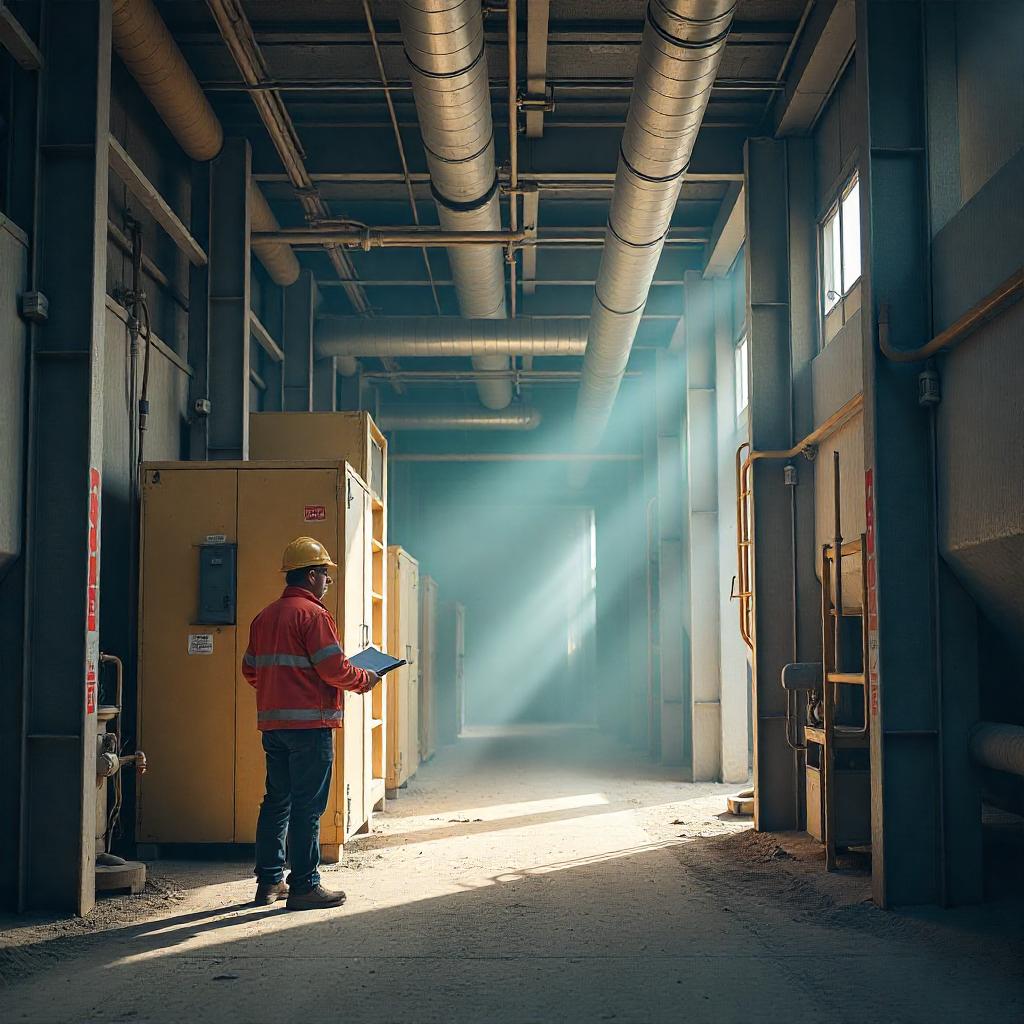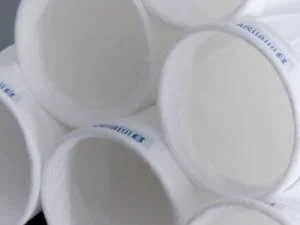What is a Dust Collection System?
A dust collection system is a setup used in industrial environments to remove dust and other particles from the air. These systems keep the air clean and safe for workers. They help reduce health risks and improve air quality. Dust collection systems come in different types. Each type works in its own way.
Here are some common types:
- Baghouses: These systems use bags to trap dust. The bags filter the air and collect dust particles. Once the bags get full, they can be cleaned or replaced.
- Cykloner: Cyclones use spinning air to separate dust from the air. The dust falls to the bottom of the cyclone, where it can be collected.
- Våtskrubbare: Wet scrubbers use water to clean the air. They spray water into the air stream, which captures dust and other particles. The dirty water then gets drained away.
Each dust collection system plays an important role in keeping industrial spaces safe and clean.
Vikten av dammuppsamlingssystem
Dust collection systems are very important for health and safety. These systems help keep the air clean in places like factories and workshops. They collect dust and other particles that can be harmful. This makes the environment safer for everyone who works there.
Effective dust collection systems provide several benefits:
- Bättre luftkvalitet: They help reduce harmful dust in the air. This leads to cleaner air for workers to breathe.
- Protection Against Respiratory Diseases: Dust can cause serious health problems, like asthma and other breathing issues. A good dust collection system helps protect against these diseases.
- Compliance with Environmental Regulations: Many places have laws about air quality. Dust collection systems help businesses follow these laws. This means they avoid fines and stay in good standing with the law.
- Increased Productivity: When the air is clean, workers feel better and can work more efficiently. This can lead to better results for the business.
- Lower Maintenance Costs: Dust can damage machines and equipment. A dust collection system reduces the amount of dust that settles on machines. This means less cleaning and fewer repairs.
Having a dust collection system is not just good for health; it also supports a better working environment.
How Does a Dust Collection System Work?
A dust collection system works by capturing dust and dirt from the air in a workspace. It has three main steps: capture, conveyance, and collection.
- First, the system captures dust. It uses a hood or similar device that sits close to the source of dust. When a machine runs, the dust goes into the hood. The hood has an opening that pulls the dust into the system.
- Next, the system conveys the dust. This means it moves the dust from the hood to the collection part. It uses pipes or ducts to carry the dust. A fan helps push the air and dust through these pipes. The fan creates a vacuum, which pulls more dust in from the hood.
- Finally, the system collects the dust. At the end of the pipes, there is a filter or bag. This filter traps the dust while allowing clean air to go back into the room. Once the bag or filter gets full, it needs to be emptied or replaced.
These three steps ensure that the workspace stays clean and safe. A dust collection system helps keep the air clear of harmful particles.
Types of Dust Collection Systems
Dust collection systems are important for keeping work areas clean. There are several types of dust collection systems. Each type has its own advantages and disadvantages. Some systems work better for certain jobs than others.
- One type is the baghouse dust collector. This system uses fabric bags to filter dust from the air. The baghouse is good for large amounts of dust. It can handle heavy dust loads well. However, it may need regular maintenance to keep the bags clean. It works best in factories or places with lots of dust.
- Another type is the cyclone dust collector. This system uses a spinning motion to separate dust from the air. The cyclone is very efficient. It can remove a lot of dust quickly. However, it may not capture very fine dust particles. Cyclones are ideal for woodworking shops where large particles are common.
- The cartridge dust collector is another option. It uses filter cartridges to trap dust. This system is compact and easy to maintain. It is good for small spaces. However, it may be more costly than other options. Cartridge collectors are great for metalworking or machining applications.
- Wet scrubbers are also a type of dust collection system. They use water to capture dust and other particles. This system is effective for very fine dust. It also helps control odors. However, it requires water and proper drainage. Wet scrubbers are useful in food processing or chemical plants.
Each type of dust collection system has its own strengths and weaknesses. Choosing the right one depends on the specific needs of the job.
Faktorer att tänka på när du väljer ett dammuppsamlingssystem
When choosing a dust collection system, several factors are important. These factors help ensure that the system works well for specific needs.
- Typ av damm: The kind of dust produced affects the choice of the system. Some dust is fine and light, while other dust is heavy and coarse. Each type needs a different method of collection.
- Luftflödeskrav: The amount of air that needs to flow through the system matters. High airflow helps remove dust quickly. Knowing the required airflow helps in selecting the right system.
- Utrymmesbegränsningar: The space available for the system is crucial. Some systems are large and need more room, while others are compact. It is important to measure the space before making a choice.
- Underhållsbehov: Some systems need more care than others. Regular cleaning and checking are necessary to keep the system running well. A system that is easy to maintain can save time and effort.
Considering these factors will help in picking the best dust collection system.
Underhåll och felsökning
Maintenance and troubleshooting are important for dust collection systems. Regular care helps keep the system running well. Here are some simple maintenance tasks to follow:
- Check filters every month. Clean or replace them if they are dirty.
- Inspect the hoses for cracks or leaks. Fix any damage right away.
- Look at the dust bin. Empty it regularly to prevent blockages.
- Test the system’s suction power. If it feels weak, there may be a problem.
- Ensure all connections are tight. Loose parts can cause leaks.
- Clean the area around the system. Dust buildup can affect performance.
- Check the motor for any strange sounds. If it makes noise, it may need repair.
- Examine electrical connections. Ensure they are secure and free of dust.
Common issues can arise with dust collection systems. Weak suction can happen if filters are clogged or if there are leaks in the hoses. This may require cleaning or replacing parts. Another issue is dust escaping into the air. This can be caused by worn-out filters. Regular checks can help catch these problems early.
Innovationer inom dammuppsamlingsteknik
Innovations in dust collection technology focus on making systems better and more efficient. Recent advancements help industries reduce energy use, automate processes, and monitor dust levels smartly.
- Energy efficiency is a big part of new dust collection systems. These systems use less power while still cleaning the air effectively. Companies design equipment to capture dust without wasting energy. This helps save money and reduces pollution.
- Automation is another key advancement. New dust collectors can now run automatically. They can start and stop based on the amount of dust in the air. This means they work only when needed, saving energy and keeping workplaces cleaner.
- Smart monitoring systems are also important. These systems track dust levels in real-time. They send alerts when dust reaches high levels. This helps workers take action quickly. Smart systems can even connect to other devices for better control.
Recent innovations in dust collection technology make workplaces safer and cleaner. These advancements help industries save energy and improve air quality.
Fallstudier: Framgångsrika implementeringar av dammuppsamling
Many industries face dust problems. Dust can harm workers and machines. Some companies have found ways to collect dust effectively. Here are some examples of these successful dust collection systems.
- One example is a woodworking factory. This factory had a lot of wood dust flying around. The dust made it hard for workers to breathe and caused machines to break down. The factory decided to install a new dust collection system. They put in large filters and ducts to capture the dust. After the system was running, the air quality improved. Workers felt better and machines worked more efficiently.
- Another example is a metalworking shop. This shop faced issues with metal shavings and dust. The dust created safety risks and made the workplace dirty. The shop chose to use a dust collection system that included vacuum units. These units collected dust right from the machines. As a result, the shop became cleaner and safer. Workers were happy, and productivity increased.
- A third example is a food processing plant. This plant dealt with flour dust, which was a big problem. The dust could cause explosions and made the environment unsafe. The plant installed a dust collection system with special filters designed for food dust. This action reduced the dust level significantly. The plant saw fewer accidents and better product quality.
These case studies show how different industries tackle dust problems. By using dust collection systems, they improve safety, health, and productivity.
Slutsats
Dust collection systems are crucial for maintaining a safe and clean work environment. By effectively removing harmful particles from the air, they protect workers’ health, improve air quality, and reduce maintenance costs. Choosing the right system depends on factors like dust type and airflow needs. Innovations in energy efficiency and automation further enhance their effectiveness.
Intensiv filter Himenviro leads the way in providing advanced dust collection solutions. Their systems help businesses reduce health risks, improve productivity, and comply with environmental regulations. Investing in high-quality dust collection technology from trusted brands like Intensiv ensures a safer, more efficient workplace.



